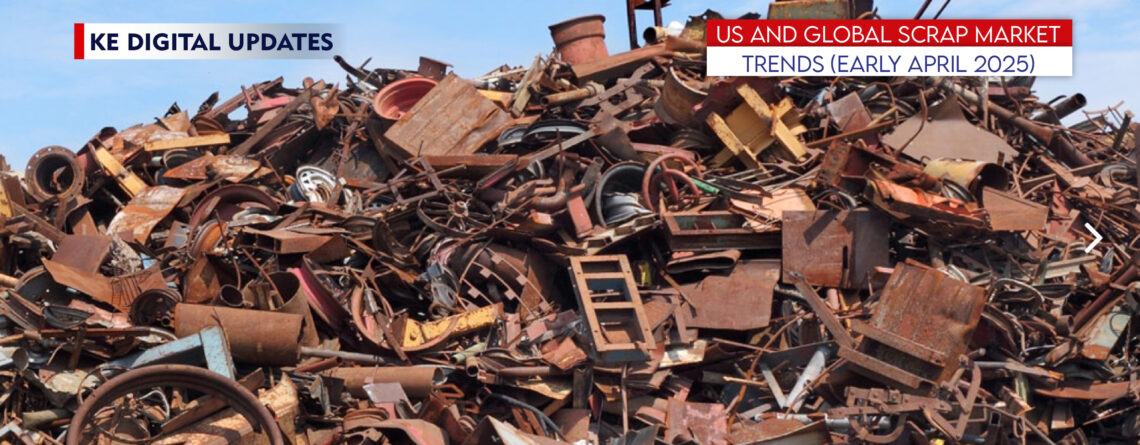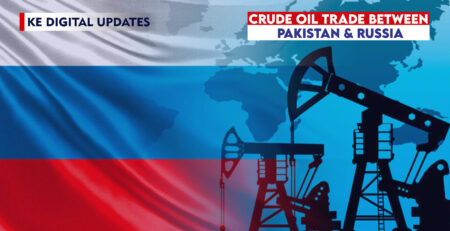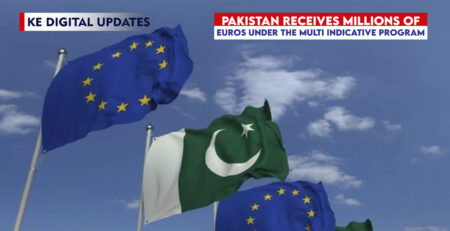As the global economy continues to grapple with fluctuating demand and geopolitical uncertainties, the scrap metal market in early April 2025 paints a compelling picture of supply-demand dynamics and regional disparities.
US Scrap Market
The scrap market witnessed a notable downturn in the United States at the beginning of April. Prices for HMS 1/2 scrap declined by $2 per ton, settling at $353 per ton. This drop was largely attributed to increased supply and weaker steel mills’ demand. Amid these conditions, market participants are adopting a cautious approach, with buyers and sellers carefully monitoring potential shifts in the demand curve.
On the production side, US crude steel output exhibited mixed performance. While there was a slight year-on-year increase, overall crude steel production declined by 1.3% during the year’s first quarter. This contraction can be linked to the uncertainty surrounding steel import duties, which have continued to weigh the market sentiment. Domestic producers remain vigilant as trade policies and global economic trends evolve.
China’s Scrap Market
In contrast to the US, the Chinese scrap market experienced a marginal price increase in early April. This uptick stemmed from reduced scrap supply from Japan, one of China’s key suppliers. As Japan grappled with domestic constraints, Chinese buyers faced tighter availability, leading to a slight upward price adjustment.
This development aligns with China’s broader efforts to secure a stable scrap supply to support its steel production. However, challenges persist as global supply chains remain susceptible to disruptions, making the balance between supply and demand precarious.
Turkey’s Scrap Market
The Turkish scrap market displayed resilience, with prices holding steady despite declining demand. However, this stability belies the underlying challenges Turkish steel mills face. With domestic and international buyers exhibiting caution, demand for finished steel products has waned, impacting the overall sentiment in the scrap market.
Adding to Turkey’s complexities is the volatility of the Turkish lira. Fluctuations in currency value have prompted local steel mills to delay scrap purchases, further compounding uncertainty in the market. These dynamics illustrate the intricate interplay of economic factors influencing Turkey’s position as a key player in the global scrap trade.
European Scrap Market
Europe mirrored the price decline observed in the US, with scrap prices softening in early April. The downward trend was driven by an oversupply coupled with weakening steel producer demand. Additionally, European exporters faced challenges maintaining competitiveness due to fluctuating exchange rates and regional economic pressures.
For European steel mills, cautious purchasing strategies have become the norm. The interplay of regional economic conditions and broader global trends continues to shape the outlook for the European scrap market.
Conclusion
In early April 2025, the global scrap market revealed a tapestry of interconnected trends and regional disparities. While the US and Europe experienced price declines driven by oversupply and waning demand, China saw a modest price increase fueled by supply shortages. Meanwhile, Turkey’s market remained stable amidst declining demand, albeit underpinned by currency volatility.
As the year progresses, stakeholders across the scrap metal industry must navigate these challenges with agility. Factors such as trade policies, currency fluctuations, and shifting demand patterns will undoubtedly play a pivotal role in shaping the global scrap market’s trajectory.







Leave a Reply